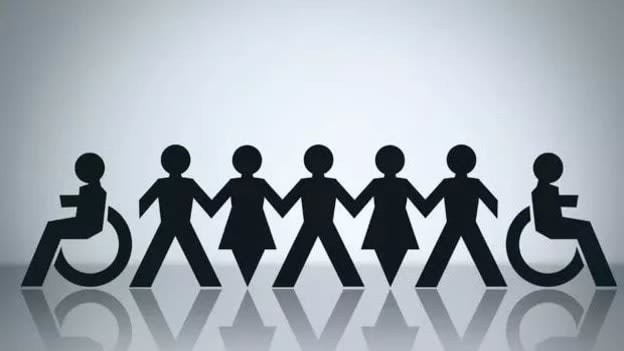The silver lining of WFH for people with special needs

The Covid-19 pandemic was a severe blow to businesses all around the world but if the ripple effects had a silver lining then it would be with regard to Diversity and Inclusion in the organisation. From transitioning to remote working to adopting a human centric work approach, the corporate world stepped up to the challenges posed by the Pandemic, many of which presented themselves as long term opportunities. While we often talk about gender diversity or cultural diversity, an important aspect of D&I that we leave out is including people with special needs. The transformations over the past year have retrospectively helped this section of society to work with greater ease, and it seems just the beginning of a fundamental shift.
Remote Working and Flexibility
Remote working has been the most crucial change for differently abled people. Work from anywhere has allowed people with mobility impairments to join/rejoin the workforce without having to put themselves at risk or worrying about travel accommodations
For people with mental health or cognitive issues, the increased flexibility has provided options to take frequent breaks or work from the comfort of the familiar setting of their home.
Constant Upskilling and Reskilling
As we move towards a more skill based working, constant upskilling and reskilling have become ingrained in the culture of organisations. This allows for greater opportunities for webinars, sensitivity trainings and workshops that help people with special needs to adapt to the work.
Varied Communication Channels
With an influx of communication channels, it is up to the leaders to utilise the best ones that lead to effective collaboration without overwhelming the team. Even though video conferencing tools like Zoom or Microsoft Teams have seen a tremendous increase in usage, organisations have to constantly evaluate how comfortable their team is with a particular communication platform and whether there is scope to make the process efficient and smooth.
Even with all these transformations, as leaders, we need to remind ourselves that there is no end goal when it comes to inclusion. The Pandemic has hit us hard and for people with special needs, the situation is worse. So while we look at the silver lining of WFH, we should keep track of the added complexities of the Pandemic and constantly seek feedback to make the environment safer and healthier for employees. Whether it is bringing changes in the hiring policy to attract a more diverse pool of talent or providing infrastructural support to ease day to day work, we need to go out of our way to ensure inclusion.
A self-sustaining model of inclusion not only hires diverse people but takes active care in ensuring that everyone adds value, and fills the gap if that isn’t the case. It’s not a one-time diversity push, it’s a decision you take one day but follow through every day from that day onwards.
While there’s a long way to go, in the last couple of years the discussion is gradually becoming mainstream. A great example is the Valuable 500 that is a group of 500 companies which have committed to putting disability inclusion on their board agenda. 19 of the 500 companies (around 4%) are from India. Time will tell how these 19 companies continue with their commitment and whether more companies would follow suit.
According to the World Bank, roughly 1 billion or 15% of the world’s population has some form of disability. So it is time we stop asking “Why include them?” and start asking “Are we going to leave out these 1 billion people from the workforce just because we are apprehensive of change?” When you put it like that, it becomes apparent that making space for diversity is important not just because it benefits business (which it does) but because we have a commitment to the society to represent it in its vibrant diversity.
As Yvonne Pierre has said, “When you focus on someone's disability you'll overlook their abilities, beauty, and uniqueness…”
















